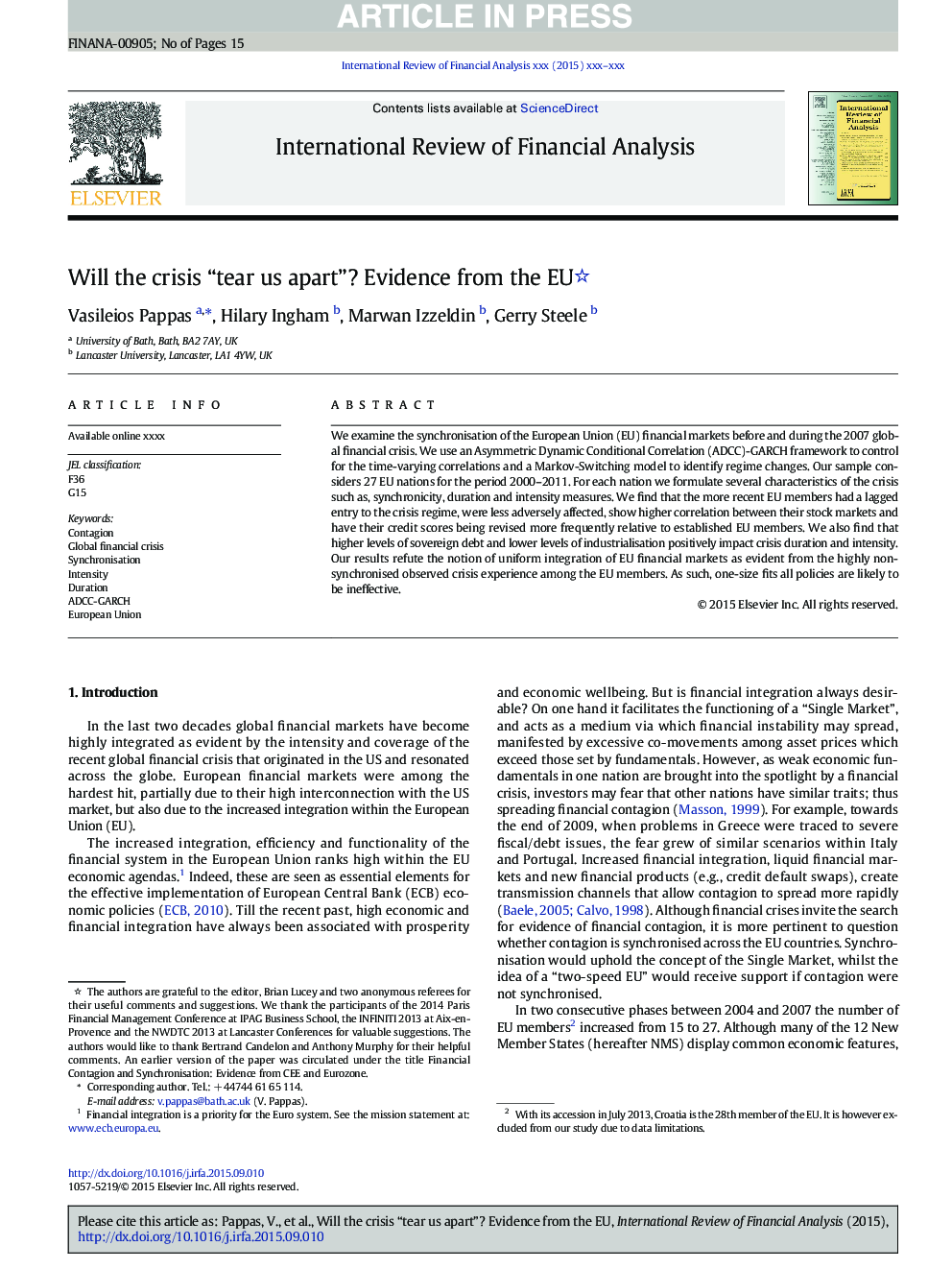| Article ID | Journal | Published Year | Pages | File Type |
|---|---|---|---|---|
| 5084595 | International Review of Financial Analysis | 2016 | 15 Pages |
Abstract
We examine the synchronisation of the European Union (EU) financial markets before and during the 2007 global financial crisis. We use an Asymmetric Dynamic Conditional Correlation (ADCC)-GARCH framework to control for the time-varying correlations and a Markov-Switching model to identify regime changes. Our sample considers 27 EU nations for the period 2000-2011. For each nation we formulate several characteristics of the crisis such as, synchronicity, duration and intensity measures. We find that the more recent EU members had a lagged entry to the crisis regime, were less adversely affected, show higher correlation between their stock markets and have their credit scores being revised more frequently relative to established EU members. We also find that higher levels of sovereign debt and lower levels of industrialisation positively impact crisis duration and intensity. Our results refute the notion of uniform integration of EU financial markets as evident from the highly non-synchronised observed crisis experience among the EU members. As such, one-size fits all policies are likely to be ineffective.
Related Topics
Social Sciences and Humanities
Economics, Econometrics and Finance
Economics and Econometrics
Authors
Vasileios Pappas, Hilary Ingham, Marwan Izzeldin, Gerry Steele,
